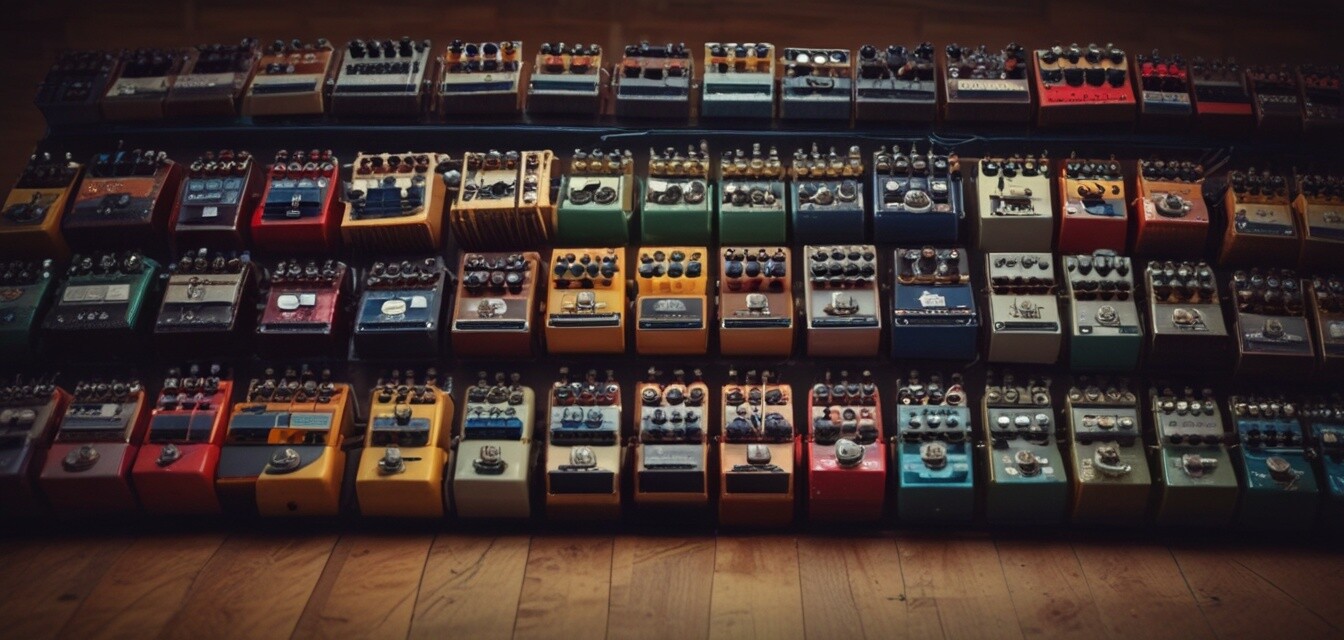
Mastering the Art of Guitar Effects with Fender
- Understand the role of different guitar effects in enhancing sound.
- Explore suggested pedal combinations for Fender guitars.
- Learn techniques to seamlessly integrate effects into your playing style.
- Discover tips on setting up and maintaining your effects pedals.
- Gain insights into how effects can be tailored to different genres.
Electric guitars have transformed the music landscape, and when paired with the right effects, Fender models can unleash sounds that transcend genres. Understanding guitar effects and their mastering opens a world of creativity for musicians. In this guide, we'll delve into effective techniques for using guitar effects with Fender models and provide valuable suggestions for pedals that complement different playing styles.
Understanding guitar effects
Before diving into specific pedals and techniques, it's essential to understand what guitar effects do. Generally, effects can be classified into several categories:
- Modulation: Effects that change the sound's pitch or tone, like chorus and flanger.
- Distortion: Adds grit and character, like overdrive and fuzz.
- Delay: Produces repeating echoes of the original signal.
- Reverb: Creates a sense of space by simulating different environments.
- Dynamics: Controls volume fluctuations, including compression and noise gates.
Recommended effects pedals for Fender guitars
| Effect Type | Pedal Suggestions | Use Case |
|---|---|---|
| Distortion | Overdrive, Fuzz | Classic rock and blues |
| Delay | Analog Delay, Digital Delay | Ambient and echo effects |
| Reverb | Spring Reverb, Plate Reverb | Adding depth to cleans |
| Modulation | Chorus, Flanger | Creating rich textures |
| Dynamics | Compressor, Noise Gate | Smoothing out performance |
Techniques for mastering guitar effects
To truly harness the power of guitar effects, consider incorporating these techniques into your practice:
- Pedal Chain Order: Arrange your pedals in a way that maximizes their effectiveness. Generally, the order goes from effects that modify the sound (like distortion) to modulation, followed by delay and reverb.
- Mixing Effects: Don't hesitate to layer effects. Combining distortion with a delay can create a unique sound, suitable for solos.
- Experimenting with Settings: Take the time to tweak knobs and settings. Subtle changes can lead to new sounds—don’t be afraid to explore.
- Using Bypass: Engage and disengage pedals thoughtfully to create dynamic shifts in your sound during performance.
- Practice with Different Genres: Different styles of music can dictate different uses of effects. Practice with various genres to see how these effects can enhance your playing.
Setting up and maintaining your pedals
Having the right setup and maintaining your pedals is essential for optimal performance. Here are some tips:
Beginner's Tips
- Use a power supply to prevent battery issues.
- Keep your pedals clean and dust-free.
- Regularly check the connections and cables for wear and tear.
- Consider using pedalboards for easy transport and organization.
- Label your pedals if you have a complex setup for quick adjustments during performances.
Effects tailored for different genres
Not all guitar effects serve the same purpose; they can drastically change your sound depending on the genre you're playing. Here’s a breakdown:
| Genre | Recommended Effects | Signature Sound |
|---|---|---|
| Rock | Distortion, Delay | Powerful, soaring solos |
| Jazz | Chorus, Reverb | Warmth and depth in chords |
| Blues | Overdrive, Wah | Expressive, gritty tones |
| Metal | Fuzz, Noise Gate | Aggressive and sharp attacks |
| Ambient | Reverb, Delay | Ethereal soundscapes |
As you adopt these techniques and understand the importance of each effect, you'll find it easier to create the sound you envision. The key is to experiment and establish a setup that feels right for you.
For further reading, consider checking out our sections on Buying Guides for gear recommendations or Fender Electric Guitars to explore the best models for effects.
Pros
- Greater tonal variety with effects
- Enhanced creativity in music composition
- Can personalize your sound
- Improves live performance dynamics
Cons
- Potential for overcomplicating setups
- Learning curve when using multiple pedals
- Costs associated with purchasing quality pedals
- Can require maintenance and upkeep